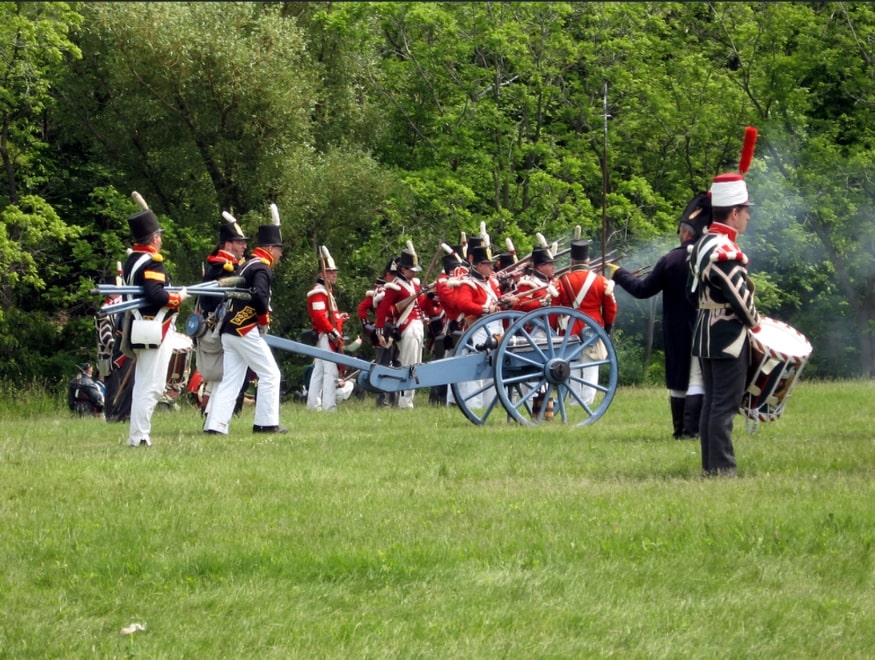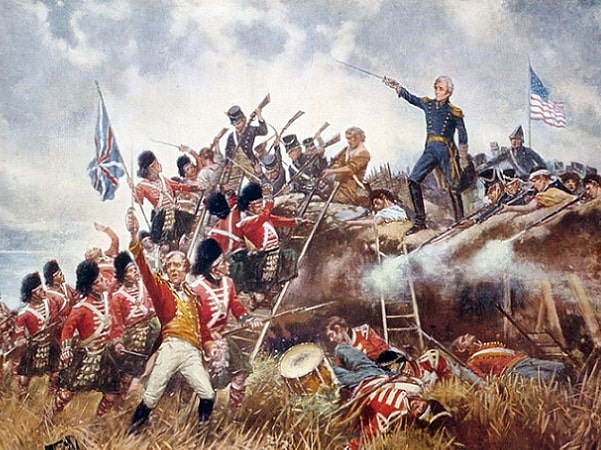Introduction: In this article – the first in a three-part series – Katie Rebecca Garner gives tips for researching your ancestor’s War of 1812 pension. Katie specializes in U.S. research for family history, enjoys writing and researching, and is developing curricula for teaching children genealogy.
The U.S. declared war against Britain on 18 June 1812, lasting until 1815. The tensions that led to the war were related to Britain not recognizing the U.S. as an independent country, refusing to respect U.S. neutrality or maritime rights. Men were injured and killed in this war, with the deaths leaving behind widows and orphans.
Survivors of these casualties were entitled to a pension. As pension laws eased, more people qualified. If your ancestor applied for a War of 1812 pension, they left behind a genealogically valuable paper trail you can now use to learn about them. This three-part series will cover what you can learn from War of 1812 pensions and how to find them.

Photo credit: https://depositphotos.com/home.html
An act of 1806 for invalids of the Revolutionary War was extended to invalids of the War of 1812; consequently, there is no separate act specifically for invalids of the War of 1812. This meant that veterans who had been injured or disabled in war service and widows of soldiers who were killed in the war qualified for pensions.
It wasn’t until 1871 that the laws were changed to expand eligibility. Per the act of 1871, a soldier had to have served 60 days and been honorably discharged. Widows were eligible if they married before 17 February 1815, when the peace treaty was ratified. Eligibility was further expanded in 1878 to soldiers who’d served at least 14 days and to widows regardless of their marriage date to the soldier.
Most men who served in the war ranged in age from 18 to 30, resulting in a birth year range of 1782 to 1796. However, a few boys who served were as young as 10 and some men were as old as 70, expanding the possible birth year range to 1742 to 1804. If your ancestor served in the war, he or his wife would only have a pension if he was wounded or killed in the war; or if he or his widow lived to the 1870s. Only a few veterans would have been alive in 1871, which may have been why the government expanded eligibility.
Case Study: Anthony McKinney
In 1871 and 1878, many people who weren’t eligible before were now eligible for pensions, so they began applying. This was the case for Anthony McKinney, who served in the U.S. Rangers under Captain Samuel McCormick. He filed for a pension in 1872 and was approved on March 7. He received backpay from 14 February 1871 when he became eligible. He received a pension of $8 per month ($194.62 in 2023) until 20 August 1874, when he died.
Anthony’s widow, Catharine, was not eligible for a widow’s pension until the act of 1878 was passed. She and Anthony married on 7 April 1858, about three years after Anthony’s previous wife died. Because their marriage was after the ratification of the peace treaty, Catharine did not qualify for a pension under the 1871 Act. This did not stop her from requesting pension back pay to the date of her husband’s death. Of course, this request was denied.
Photo credit: https://depositphotos.com/home.html
For a soldier to qualify for a pension, he had to prove his service. Anthony had done this by providing discharge papers stating he enlisted on 25 October 1813 and was discharged on 29 October 1814. This proof often comes through muster rolls, which Captain McCormick’s company did not have.
Widows and orphans applying for a pension had to prove the soldier’s service and relationship with the soldier. A widow had to provide evidence of her marriage to the soldier and proof of his death. Some families did this by sending in pages from their family Bible. Some states legally recognized common-law marriages.
Catharine proved her marriage by obtaining affidavits from people who had attended the wedding ceremony. She could not obtain a marriage certificate, nor could she track down the minister who performed the marriage.
If the pension was rejected, the ancestor may have provided more information to prove their eligibility. This additional information did not guarantee that their pension would be approved, but it makes an excellent paper trail for modern genealogists.
When the pension was approved, the ancestor or their agent would go to the pension office to collect the pension payment. In the case of the McKinneys, this was the pension office in Indianapolis, Indiana. After the pensioner died, the heirs would collect the final payment or make the final settlement. This payment would include the money owed between the last payment collected and the death of the pensioner.
If an ancestor moved after service, they had to apply for a pension through the state they served in rather than the state they lived in.
In this article, we learned what our ancestors had to go through to apply for a pension. In the next article in this series, we will learn what this means regarding the content of pension records.
Resources
- Anthony W. McKinney (Capt. Samuel McCormick U.S. Rangers, War of 1812), pension nos. SO11162, SC13803, WO22409, 24042; War of 1812 Pension and Bounty Land Warrant Application Files, digital images, National Archives (accessed 8 June 2023).
- https://familytreewebinars.com/webinar/revolutionary-war-series-4-of-5-records-created-by-the-revolutionary-war-after-the-war-pensions/?category=records&subcategory=military&subsubcategory=revolutionarywar
- https://familytreewebinars.com/webinar/accessing-national-archives-military-records-from-start-to-finish/?search=national%20archives
- https://www.legalgenealogist.com/2013/12/04/the-marriage-and-the-pension/
- https://www.legalgenealogist.com/2013/03/30/chasing-that-pension-file/
- https://www.familysearch.org/rootstech/session/what-does-that-really-say-records-analysis-1812-military-pension
- https://www.familysearch.org/rootstech/series/a-call-to-arms-researching-revolutionary-war-ancestors
- https://www.archives.gov/files/research/military/army/dc/m313.pdf
- https://www.familysearch.org/rootstech/session/resources-for-researching-your-war-of-1812-ancestor-online-part-1
- https://www.familysearch.org/rootstech/session/resources-for-researching-your-war-of-1812-ancestor-online-part-2
- https://familytreewebinars.com/webinar/the-war-of-1812-records-preserving-the-pensions/
- https://en.wikipedia.org/wiki/War_of_1812
Explore over 330 years of newspapers and historical records in GenealogyBank. Discover your family story! Start a 7-Day Free Trial
Note on the header image: General Andrew Jackson leads his troops at the Battle of New Orleans, War of 1812, by Edward Percy Moran. Credit: Library of Congress, Prints and Photographs Division.
Related Articles:
- Genealogy Tip: Your Ancestor’s Revolutionary War Pension (part 1)
- Genealogy Tip: Your Ancestor’s Revolutionary War Pension (part 2)
- Genealogy Tip: Your Ancestor’s Revolutionary War Pension (part 3)
- Genealogy Tip: Your Ancestor’s Civil War Pension (part 1)
- Genealogy Tip: Your Ancestor’s Civil War Pension (part 2)
- Genealogy Tip: Your Ancestor’s Civil War Pension (part 3)
